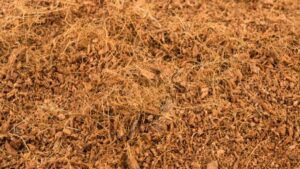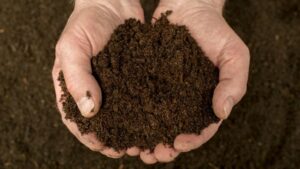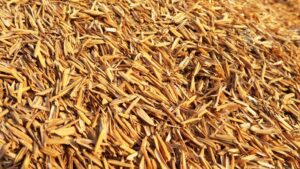Peat moss vs Sphagnum moss
Both Peat moss and Sphagnum peat moss are the same material. Only the difference is that the peat moss is the decayed and dried sphagnum whereas the live and fresh is known as Sphagnum moss. In another word, Peat moss vs Sphagnum moss is all same only Peat moss is a dead fibrous material that forms when mosses and other living materials decompose in peat bogs.
Peat forms over many thousands of years in these bogs, swamps, and other wetlands. Peat grows on the surface of the bog where there is oxygen. As the plants die they settle to the bottom where there is very little if any oxygen (anaerobic) and slowly decay forming thick mats of partially decomposed plant material.
There are around 380 species of mosses present under the genus Sphagnum (6). Peat moss forms a group of plants that grows in the wetlands found in cooler areas are extremely valuable as they help in clean water, and pollution and store carbon dioxide thus are an important part of our ecosystem. Not only this, the peat bogs provide a unique ecosystem supporting numerous insects, plants, and birds. Overexploitation of these peat bogs to obtain peat moss destroys these valuable resources.

What is Sphagnum moss?
Mosses are small plants without vessels, which means they cannot transport nutrients and other substances like vascular plants can. Sphagnum moss is a type of moss that grows in wetlands and is part of a genus that includes around 380 different moss species and is commonly known as sphagnum moss, also bog moss, and quacker moss. It is unique because it can absorb large amounts of water, which helps it thrive in wet environments. This moss also plays an important role in regulating water flow, preventing erosion, and storing carbon.
What is Peat moss?
Peat moss is formed from partially decomposed remains of sphagnum moss in waterlogged areas called bogs. Bogs accumulate organic material, and since decomposition is incomplete, peat forms over time. Bogs vary in nutrient richness and water source, with different types including mires, fens, and quagmires. Peat is soil composed of a high amount of semi-decomposed matter that becomes trapped and builds up as humus, holding onto large amounts of carbon. This makes peat important for storing carbon and regulating the global climate (7).
Why we should not use peat moss or sphagnum moss
- Do you know the bogs where these mosses grow capture about world one-third of soil carbon. Once these moss are harvested from the bog, this harmful carbon is again released into the environment in the form of carbon dioxide.
- Another issue with using peat moss is that the bog from where they are obtained is renewable but the process of their formation is very very slow it nearly takes 100 and 1000 years to replenish.
- Over 90% of precious wetland peat bogs in England and New Zealand have been wrecked by peat mining.
- Peat mining and the sale of peat moss are now prohibited or restricted in many nations (1).
- Numerous alternatives to peat moss are available for gardening purposes.
Other efficient substitutes for peat moss
1. Coconut coir

Coconut coir or coconut fiber is a nice alternative to peat moss in horticulture. This is mainly composed of husk and short fibers from the mesocarp of the coconut fruit which are generally a waste product of the coconut industry. the main production countries for the coconut coir are the Philippines, Indonesia, Sri Lanka, Malesia, and Thailand (2).
The advantages of using coconut coir over peat moss are (3).
- Readily renewable resource
- Rehydrates easily
- Aerates soil well -Promotes moisture-holding capability of soil with less water.
- Cation exchange capacity is higher than peat moss.
2. Compost

Another great alternative to peat moss is compost. They are partially broken down organic materials which help in improving the soil quality for horticulture, gardening, and landscaping. Other advantages of using compost are
- Adding compost to your soil improves its ability to accept and store water.
- It also helps aerate the soil and also increases the activity of soil organisms.
- Provides nutrients to your plants over time.
- Using compost helps to reduce landfill waste, while providing your soil with rich nutrients, reducing your need for chemical fertilizers (4).
Note: Although precautions should be taken before using compost. Always make sure that too much compost should not use as it causes unnecessary stress to the plants, especially horticulture plants, and also causes water pollution. It can reduce the use of fertilizers but can not totally replace the need for fertilizers.
3. Rice hulls

Rice hulls are also a good alternative for peat moss. or husks are now a day commonly used as a soil amendment, typically in the form of compost production. The primary advantage of using rice hulls are
- They are available in large quantities, and their ability to bulk up and increase the volume of compost that can be produced.
- Provide a dense source of carbon which, when composted, can increase the water and nutrient holding capacity of the soil, improve soil irrigation and porosity, infiltration, and many other key beneficial soil physical characteristics.
- Porous materials of hulls act as a sponge and when become old can hold numerous other plant essential nutrients, water, and microbes, making them extremely valuable as soil amendment/conditioners
Note: Rice hulls are high in carbon and should be mixed with additional nitrogen-rich materials such as photosynthesis, not from roots in the soil. However, these highly (5)

Pingback: Bog vs Swamp vs Marsh - Science Query